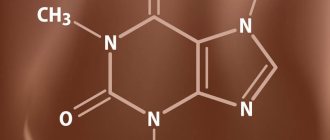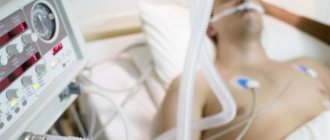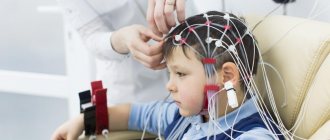Published: 07/23/2021 14:15:00 Updated: 07/23/2021
Atherosclerosis is a systemic disease that primarily affects the arteries. Cholesterol is deposited in the walls of blood vessels, resulting in the formation of plaques that interfere with normal blood flow. Internal organs experience a lack of oxygen and nutrients, and with the slow progression of the pathology, their work is gradually disrupted. In the case of acute thrombosis with complete blockage of blood flow, severe complications may develop - myocardial infarction, stroke, gangrene of the lower extremities and other dangerous pathologies.
Reasons for appearance
The appearance of atherosclerosis is associated with metabolic disorders in the body, lipid imbalance and excess cholesterol in the blood.
Mechanical damage to the vessel wall also plays an important role, contributing to atherosclerotic deposits and plaque formation at the site of injury. The risk of developing atherosclerosis is higher in men over 45 years of age, women over 55 years of age or with early menopause, as well as among people with familial hypercholesterolemia and family history, whose relatives already suffer from this disease.
Other factors contribute to it:
- unbalanced diet with an abundance of fatty foods;
- excess body weight;
- smoking;
- alcohol abuse;
- sedentary lifestyle;
- cardiovascular diseases – ischemic heart disease, arterial hypertension;
- endocrine pathologies, in particular diabetes.
Folk remedies
Let's consider various methods of traditional medicine to defeat atherosclerosis. Any of the following decoctions and infusions should be used for a long time.
Infusions
Infusions are means in which the raw materials are prepared with boiling water, or poured with water of any temperature, and infused for some time before use. In some cases, slight heating in a water bath is possible, less than 15 minutes. Leaf, berry and flower raw materials are often prepared by infusion. Here are the most effective ones :
- You need to take dandelion (roots, leaves and stems in equal parts by weight), strawberries (leaves and roots), lemon balm and nettle leaves. Equal parts of the raw materials of each plant are taken and mixed. 6 grams of herbal mixture are poured into 300 grams of boiling water, let stand for an hour. Drink in small portions throughout the day.
- Mix 1 part birch leaves, 1 part coltsfoot leaf with 2 parts hawthorn flowers and 2 parts yarrow flowers. Brew 400 grams of boiling water and 2 dessert spoons of the mixture. Wrap up and leave for 3 hours. Divide 200 grams into morning and afternoon doses, and drink the rest (200 grams) in the evening.
- Mix one part by weight of immortelle flowers, wild raspberry shoots (important!), and lingonberry leaves with 2 parts of hawthorn berries. Brew 3 grams of the collection with 200 ml of boiling water, wrap and leave for an hour. Divide into 4 daily doses.
Decoctions
The denser parts of plants are usually boiled: woody shoots, roots, bark. Decoctions are prepared using the water bath method. The raw materials are combined with water, heated and maintained in a state of simmering for 30-40 minutes. Here are some of them :
- Take oat straw, rose hips, peppermint and wild strawberry leaves in equal proportions. To prepare you need to take a tbsp. spoon and combine with 2 glasses of water. Prepare the decoction for 30 minutes. Divide the finished product into 3 daily portions.
- Mix blackberry leaves, elecampane root, oregano and shepherd's purse equally. 1 tbsp. Combine a spoon with 1.5 glasses of water. Prepare the decoction according to the standard procedure. Divide into 4 daily servings.
- Combine rowan berries, corn silk, calendula and clover flowers in equal parts. Make a decoction of 1 tbsp. spoons of the mixture and 300 ml of water. Divide into 4 doses.
We invite you to watch the video where you will learn another decoction recipe:
Something else
In addition to herbal remedies, there are other effective folk remedies against atherosclerosis:
- With honey . A glass of onion juice, 50 gr. chopped lemon peel, and 250 gr. mix honey, leave for 3 days. Store in a dark place, away from heating appliances. Take a tablespoon of the product 3 times a day half an hour before meals.
- With garlic . Mix garlic juice in equal proportions with fresh honey. Take 1 tbsp. spoon half an hour before meals. This recipe is not intended for long-term use. After 1-1.5 months you need to take a break for a month.
- With rosehip . Dry berries are poured into the bottle 2/3 of the way up, vodka is added. Infuse in a dark place for 10-14 days, shaking daily. Then the liquid is separated. Drink 20 drops three times a day. Drop the tincture onto a piece of sugar.
- With dandelion . The roots of the plant are dried and crushed. Take 3-5 grams of powder. before every meal. The course of treatment is six months.
Now you know how to treat a disease at home that also affects the blood vessels of the brain.
Classification of the disease
The formation of atherosclerotic plaques can occur in individual vessels or affect most of them. Depending on the organ in which blood flow is reduced and the affected artery, the following forms of the disease are distinguished:
- Heart shape. Ischemic atherosclerosis with damage to coronary vessels and valves.
- Kidney form. The renal arteries are affected.
- Brain (cerebral) form. The disease spreads to intracranial vessels.
- Intestinal form. The mesenteric arteries are affected.
- Atherosclerosis of the aorta. Its abdominal region is most often affected.
- Atherosclerosis of the arteries of the lower extremities, mainly femoral.
- Atherosclerosis of brachiocephalic vessels. These include the right carotid, vertebral and subclavian arteries.
Characteristics of the disease and features of its development
The development of atherosclerosis of the lower extremities is associated with the presence of pathologies and bad habits in a person, which negatively affect blood counts and the possibility of its movement through the vessels.
This disease can be characterized as damage to the large arteries of the lower extremities, associated with the formation of atherosclerotic plaques on the internal surfaces of their walls. Such deposits slow down blood flow in the legs, as they partially or completely block the lumen of the blood vessels.
The most commonly affected arteries are:
- femoral;
- anterior tibial;
- posterior tibial;
- popliteal;
- common iliacs.
The formed plaque does not remain stable: if provoking factors are not excluded, its size increases to the point that the formation completely clogs the blood vessel.
The development of pathology occurs gradually. The following stages of the pathological process are distinguished:
- Formation of lipid stains. The walls of arteries locally absorb lipid compounds. Externally, the areas that were saturated with them look like light yellow stripes. At this stage, there are no visible disturbances in blood flow, so the disease does not manifest itself in any symptoms.
- Formation of fibrous plaque (atheroma). Areas of lipid stains become inflamed due to the immune system's reaction to the changes occurring. As a result, the fats accumulated in the vessel wall disintegrate, and connective tissue begins to grow in their place. This process is called sclerosis. The forming plaque protrudes into the lumen, preventing the full passage of blood in this area.
- Formation of complicated atheroma. This is the most severe stage, during which pathological changes occur: the cholesterol plaque gradually disintegrates, and its contents (fat molecules and cells surrounded by connective tissue) penetrate into the bloodstream. Erosion appears at the site of the destroyed plaque. Platelets and other elements responsible for blood clotting are concentrated here. This starts the process of accelerated thrombus formation. The affected area in the structure of the vessel grows and thickens, which significantly impedes blood circulation.
The development of this disease is a long process: 10-15 years pass from the appearance of the first changes to the appearance of the initial symptoms. This makes it difficult to start treatment in a timely manner.
Symptoms of atherosclerosis
For years and even decades, the disease can occur without clinical manifestations.
Subsequently, signs of poor blood supply to various organs are observed. With atherosclerosis of the heart, the patient is bothered by “squeezing” pain behind the sternum during physical activity - angina pectoris, arrhythmia, a feeling of palpitations accompanied by shortness of breath, and the development of myocardial infarction is possible.
In case of damage to the abdominal vessels, there may be attacks of pain in the upper and middle parts of the abdomen, which are accompanied by increased gas formation and constipation.
Atherosclerosis of the cerebral arteries manifests itself in dizziness and short-term episodes of loss of consciousness, and tinnitus. As the disease progresses, a stroke may develop with its neurological symptoms - dizziness, headache, lack of coordination and disorientation, numbness or weakness of the muscles of the face, arms or legs of one side of the body, sudden speech disturbances, visual disturbances, prolonged unconsciousness.
Vascular thrombosis of the lower extremities can lead to numbness and discoloration of the skin of the legs, a crawling sensation, and muscle pain when walking - “intermittent claudication.” Subsequently, the skin becomes thin and dry, peels, nails thicken, difficult-to-heal trophic ulcers form, and frequent cramps appear.
The main symptom of renal artery disease is an uncontrolled increase in blood pressure, leading to drug-resistant hypertension.
Atherosclerosis of cerebral vessels
Atherosclerosis is the most common chronic disease that affects blood vessels, in particular, elastic and elastic-muscular arteries of the heart, brain and other organs with the formation on their inner surface of fatty, often cholesterol deposits in the form of atheromatous (from the Latin “atero” - porridge ) plaques with subsequent growth of dense connective tissue in them (sclerosation) and impregnation with calcium salts (liming).
As a result, the lumen of the arteries gradually decreases or becomes obliterated, i.e. disappears completely, which leads to increasing insufficiency of blood supply to the organ tissues supplied by this artery. In addition, complete blockages (occlusions) of the lumen of blood vessels are possible with the contents of plaques in combination with blood clots, which leads to tissue necrosis (infarction) or gangrene of an organ or part of the body.
The studies conducted indicate the possibility of complete resorption of cholesterol infiltration of blood vessels, which indicates the possibility of curing atherosclerosis in the early stages of its development. The appearance of atherosclerotic plaques
sometimes they are found in young people at the age of 20, but the greatest prevalence of the disease is observed in people of mature age - 50-60 years, and more often in men; In women, the disease is more common after 60 years of age. The high prevalence of this disease among the population associates it even with one of the manifestations of aging of the body
"Personal health plan"
is a comprehensive examination based on evidence-based recommendations
Causes of cerebral atherosclerosis
Among the causes of the disease, along with hereditary predisposition, one should note frequently recurring psycho-emotional stress that affects the tone of the arteries, hypertension, diabetes mellitus, obesity, physical inactivity and smoking.
Clinical manifestation of cerebral atherosclerosis
is determined by the degree of insufficiency (ischemia) of blood circulation and nutrition of brain tissue caused by it. The first signs of ischemia include periodic headaches and transient tinnitus, especially during periods of intense mental activity. There is a deterioration in memory for current events, forgetting words during a conversation, but memory for long-past events is completely preserved. Sleep is disturbed, disturbing awakenings and insomnia become frequent. Patients experience changes in the psycho-emotional sphere - they become suspicious, prone to tearfulness, causeless depression and “mental chewing gum” - prolonged experience of minor failures or grievances.
Subsequently, patients exhibit more objective manifestations of cerebral atherosclerosis
– impaired coordination of movements, periodic, especially with excitement, trembling of the limbs and head. When examining the large arteries of the brain, signs of their calcification can be determined, and pulsation of the brachial arteries also becomes visible. During this period, due to temporary cerebral ischemia, patients may develop transient (transient) strokes with temporary disturbances of skin sensitivity - paresthesia, skeletal and facial muscle tone with weakening of active movements in individual limbs, unilateral facial distortion due to loss of muscle tone. The most serious complication of the disease is ischemic stroke of a part of the brain due to complete occlusion of one of the large cerebral arteries, which, as a rule, leads to permanent disability of the patient.
ONLINE CONSULTATIONS
We treat where it is convenient for you
MORE DETAILS
Treatment of cerebral atherosclerosis
In treating a patient, the main task of the doctor is to prevent further progression of the formation of atherosclerotic plaques and stimulate the development of roundabout circulatory pathways in the suffering organs. The latter is achieved by prescribing individual physical therapy in the form of dosed and regular physical activity appropriate to the age and capabilities of the patient. This measure promotes the opening of the collateral network of vessels that is not involved at rest and in conditions of habitual physical inactivity, bringing blood to the organ suffering from ischemia. In combination with physical exercise, walks in the fresh air, light body massage, water procedures, including balneotherapy with therapeutic iodine-bromine, radon baths or using pine extract, sea salt, and oat decoction will be useful. These procedures also help reduce the excitability of the nervous system and normalize blood pressure.
Measures aimed at preventing the progression of atherosclerosis primarily include a balanced diet with a limited and equal content of vegetable and animal fats, a sufficient content of vitamins (primarily vitamin C, antioxidants - vitamins E, A, as well as B vitamins) and eliminating weight gain. The daily diet should be dominated by plant foods - greens, fruits, vegetables, fish and seafood; white breads, pasta, foods high in cholesterol - fatty meats, smoked meats, eggs and butter should be limited. In case of excess weight, nutrition should be aimed at reducing it by limiting the caloric content of food. The removal of excess cholesterol from the body is facilitated by measures to cleanse it, in particular by cleansing the intestines of cholesterol associated with bile, by periodically taking saline laxatives, including cereals rich in plant fiber in food, and repeated intestinal irrigation.
When treating concomitant diseases that contribute to the development and progression of the process (primarily hypertension and diabetes mellitus), one should not strive to urgently reduce blood sugar levels and blood pressure - this can aggravate existing organ ischemia. But at the same time, systematic treatment of these diseases is also one of the main measures of secondary prevention.
Drug treatment under medical supervision with drugs that lower blood cholesterol levels can only play a secondary role in this case.
Diagnosis of atherosclerosis
The diagnosis is based primarily on the results of laboratory tests and data from instrumental research methods.
A conversation with a patient only allows us to identify risk factors for the development of diseases and, together with an examination, as well as consultation with other specialists, suggest which organs have already been affected by the disease. Diagnosis of atherosclerosis necessarily includes:
- Blood chemistry.
- Ultrasound of the heart and blood vessels.
- Electrocardiography.
A high predisposition to the development of the disease is indicated by changes such as an increase in the concentration of total cholesterol, triglycerides, low- and very low-density lipoproteins, and a decrease in the amount of high-density lipoproteins.
Innovative risk factors for atherosclerosis include C-reactive protein (CRP), apolipoproteins A1 (apoA1) and B-100 (apoB), some polymorphisms of endothelial synthase genes (NOS3G894T, NOS3T(-786)C) and blood coagulation factors FV and FII. To obtain accurate results of a blood test for atherosclerosis, three days before the test you should give up fatty, cholesterol-rich foods, and 8-10 hours before, eat nothing at all and drink a lot of liquid. 30 minutes before the test, you should avoid strong emotional stress, stress, and do not smoke.
Echocardiography clearly shows signs of atherosclerosis of the heart valves and aorta. According to indications, ultrasound scanning of the brachiocephalic, transcranial, and arterial vessels of the lower extremities is also performed.
Reflects disturbances in heart rhythm and electrical conductivity of the organ. Exercise testing may be performed to detect exertional angina.
The standard list of laboratory tests also includes a general clinical blood test and a general urinalysis.
Additionally, for the purpose of differential diagnosis, blood tests for the level of fibrinogen, homocysteine, antibodies to cardiolipin (IgG and IgM), and lupus anticoagulant may be recommended. To visualize atherosclerotic plaques, according to indications, angiography is used - an X-ray examination with the introduction of a contrast agent. In case of preparation for surgery on the heart vessels, coronary angiography is performed.
The “gold standard” for diagnosing pathological changes in the arteries of the brain and parenchymal organs is spiral computed tomography with contrast.
Often such patients are recommended to consult an ophthalmologist. Fundus ophthalmoscopy reveals signs of atherosclerotic damage to small retinal vessels.
Diet for high cholesterol
To improve cholesterol balance in the body, it is important to eat right. The body should receive healthy foods and not harmful ones. They allow you to increase the proportion of high-density lipoproteins (“cleaners” of blood vessels) and reduce the proportion of low-density lipoproteins (atherogenic enemies). There are 3 classes of substances that must be present in the diet:
- Omega-3 polyunsaturated fatty acids, which are especially rich in fatty sea fish, avocados, and natural (unfried) vegetable oils.
- Hycosides – These can be found in grapefruit.
- Flavonoids contained in apples.
Now let's learn more about how to try to protect blood vessels using proper nutrition, and what you should include in your menu.
Avocado
This vegetable contains a lot of omega-3 acids, in particular eicosapentaenoic and decosahexoenoic acids. These substances prevent the negative effects of oxidative stress, which triggers the aging process. Omega-3 acids help neutralize free radicals that damage blood vessels. But it is precisely to the sites of damage that cholesterol molecules rush, trying to “patch up” the resulting holes. But instead of benefit, they only bring harm - over time, the cholesterol plaque can significantly increase in volume and lead to blockage of the feeding vessel.
In addition, avocados consumed as part of the diet are rich in potassium. By competing with calcium for binding sites, this mineral prevents the deposition of calcium salts, which make blood vessels fragile (elasticity decreases).
Fatty sea fish
This diet product is rich in unsaturated fatty acids, which are essential for the normal functioning of the heart and blood vessels. These are healthy fats from which “good” high-density lipoproteins are formed, which protect blood vessels. Sea fish contains a lot of protein and beneficial microelements, especially iodine. Optimal content of the latter is important for proper functioning of the thyroid gland. But it is thyroid hormones that determine metabolic activity. It is already a proven fact that hypothyroidism (decreased thyroid function) increases the risk of atherosclerosis. Therefore, to counter this disease, include fatty sea fish (salmon, trout, mackerel, capelin) in your menu at least 2 times a week to effectively prevent atherosclerosis.
Broccoli
Broccoli is a source of sulforapane. This substance directly prevents the formation of atherosclerotic plaques, so it must be present as part of a hypocholesterol diet.
In addition, broccoli contains a lot of coarse fiber. At the intestinal level it acts as a sorbent. Increasing in volume, it reduces the absorption of harmful substances, including excess cholesterol. In addition, it normalizes intestinal motility. This means that unnecessary metabolites from food have less time to contact the mucous membrane, so there is a greater likelihood that they will exit the body in transit.
Grapefruit
Grapefruit contains glycosides that have a positive effect on the heart muscle and the condition of the internal lining of blood vessels, thereby preventing the development of atherosclerosis. And the presence of vitamin P helps to further strengthen the vascular wall, increasing its resistance to damage. This complex effect, combined with a decrease in blood pressure, occurs with regular consumption of these citrus fruits.
However, you should be careful with grapefruit if you are already taking statins, a special class of drugs that are needed to lower high levels of “bad” cholesterol. These drugs are metabolized in the liver by a special enzyme system. And some substances in grapefruit can temporarily inactivate this enzyme, which increases the likelihood of side effects from taking statins. Therefore, ask your doctor in advance whether the metabolism of the drug changes when used simultaneously with grapefruit.
Apples
Apples are a real storehouse of flavonoids. They set cholesterol metabolism in the body in the right direction, reducing the risk of coronary heart disease and other cardiac pathologies. It is recommended to eat 2-3 apples a day. Don't forget about calories. If you are watching your weight, then as part of your diet you should choose sour or sweet and sour varieties.
Treatment
Treatment of atherosclerosis begins with correction of diet and lifestyle changes.
All patients are recommended to lose weight, moderate physical activity, and quit smoking and alcohol. Often the cause of atherosclerosis is a nutritional factor, so diet plays a very important role. To reduce the concentration of cholesterol in the blood, it is important to avoid meat broths, fatty, salty, smoked foods, semi-finished products, spicy, spicy, fried foods, and limit the consumption of table salt.
Prohibited products include:
- sugar;
- confectionery, sweets;
- mayonnaise, tomato and other store-bought sauces;
- bakery products made from wheat flour;
- offal;
- sweet carbonated drinks;
- industrially produced juices and nectars;
- cocoa;
- canned meat and fish;
- dried fruits high in sugars;
- strong coffee and tea.
It is recommended to eat split meals five times a day, including a sufficient amount of fiber, protein (lean meats and fish, low-fat cottage cheese), fresh vegetables (except potatoes), fruits, and dairy products.
Drug therapy is aimed at:
- decreased cholesterol synthesis (statins, fibrates);
- decreased absorption of fats from food (cholesterol absorption inhibitors, bile acid sequestrants);
- prevention of thromboembolic complications (antiplatelet agents);
- relief of symptoms of atherosclerosis (painkillers, antispasmodics).
To determine indications for surgical treatment, the degree of disruption of blood flow in the vessel is determined.
An overlap of its lumen of less than 50% is considered hemodynamically insignificant; with stenosis of 50-70%, only drug therapy is usually carried out. Correction of arterial obstruction surgically must be performed in the third stage of atherosclerosis and narrowing of the lumen by more than 70%. There are two main types of surgical intervention:
- Balloon angioplasty. A balloon is inflated inside the affected vessel, while the atherosclerotic plaque is flattened and evenly distributed along the artery wall. At the end of the manipulation, the device is removed.
- Arterial stenting. During the operation, a thin lattice cylinder is inserted and opened in the area of narrowing. It also presses against the plaque, but remains in the lumen of the vessel, gradually growing into its endothelium.
What increases blood cholesterol
Cholesterol levels can be increased by poor nutrition and problems with the liver, where resynthesis of this substance occurs. The most dangerous products are recognized:
- fatty meats, chicken skin, offal, sausages and semi-finished products;
- Trans fats are chemically modified vegetable oils that are given the appearance of butter (margarine). There are especially many trans fats in confectionery products;
- fatty types of dairy products - you should not refuse such food, it is important to follow the recommended standards;
- fried foods – heating oil to extremely high temperatures leads to the formation of trans fat and carcinogens;
- easily digestible carbohydrates in rice, sweets, soda, breakfast cereals, etc. – they provoke inflammatory reactions in the body from the blood vessels, thereby increasing the atherogenicity of the plasma;
- Coconut oil is a leader in the content of saturated fats, which lead to an increase in “bad” cholesterol.
To minimize the risks of atherosclerosis, it is important to adhere to a diet, excluding harmful foods from the menu.
Any conditions that negatively affect the liver also alter cholesterol metabolism. Increase the likelihood of developing atherosclerosis:
- liver dysfunction;
- hepatitis;
- fatty liver;
- alcohol abuse;
- work in chemically hazardous production;
- inhalation of household chemical vapors, etc.
If possible, as part of prevention, you should adhere not only to diet menus, but also protect the liver from adverse internal and external influences.
To begin with, we will talk about drugs that affect the condition of blood vessels, and below we will give examples of products that can lower the content of “bad” cholesterol.
Complications
Atherosclerosis of the lower extremities is dangerous due to the development of gangrene, muscle atrophy, and thromboembolism of blood vessels of vital organs in the event of plaque rupture.
Cardiac complications with damage to the coronary vessels include myocardial infarction, focal dystrophy of the heart muscle, myocardiosclerosis, and coronary sclerosis.
With obstruction of the mesenteric arteries, ischemic colitis and intestinal gangrene are possible, and secondary arterial hypertension is possible in the renal arteries. Cerebral consequences include hemorrhagic and ischemic stroke, transient ischemic attacks, and atherosclerotic dementia.
An aortic aneurysm poses a danger to the patient's life, the rupture of which in most cases is fatal.
Prevention
In order to avoid cerebral atherosclerosis, traditional medicine offers tasty and healthy herbal teas, the regular use of which normalizes metabolic processes, helps reduce cholesterol and strengthens blood vessels:
- Equal parts chicory root, dandelion root and elecampane root.
- Strawberry leaf, raspberry leaf and rose hips.
- Birch leaf, oat straw, nettle, rose hips, mint.
- Pink lemon balm petals, herbal part of strawberry, rowan berries.
Advice! To prepare, add 1 teaspoon of any mixture to the usual tea leaves, and prepare tea as usual.
Prevention of atherosclerosis
For patients with a family history and age-related predisposition, a screening examination is recommended to determine the risk of developing cardiovascular pathology.
It aims to detect laboratory and genetic markers of the disease. Prevention of atherosclerosis includes weight control, proper nutrition, sufficient physical activity, giving up bad habits, and timely treatment of chronic diseases.
Author:
Pugonina Tatyana Alekseevna, Therapist










